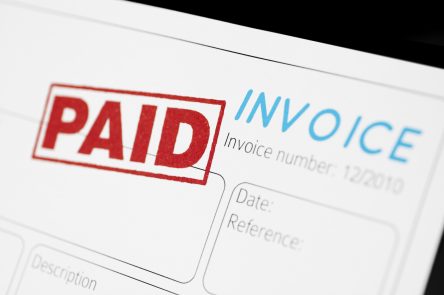Ten Year End Tax & Finance Tips for Businesses and Business Owners
November 17, 2023
The economic landscape has undergone a major shakeup over the past few years. Financial and tax strategies that once made financial sense for many businesses and business owners may no longer be the best approach. At the same time, some new opportunities for year-end tax savings have arisen.
In this webinar recording, GGFL Partners Josh Engel and Natalie Evans discuss year-end tax opportunities that can make a real difference to the short and long-term financial health of your business and personal finances in 2024.
Specific business and personal tax issues that Natalie and Josh cover include:
- CEBA loan repayment
- Using capital losses
- Tax benefits of immediate expensing
- Grants and incentives, including zero emission vehicles
- Disposition and acquisition of capital assets
- Applying for the accelerated investment incentive property (AIIP)
- Small business deductions
- Compensation strategies for business owners
- Alternative minimum tax and how it might affect your planning
- Personal tax deduction reminders
If properly leveraged, these strategies are meant to help ensure your financial resources are working as hard for you, as you work for your business.
CEBA Loan Repayments
The Canada Emergency Business Account (CEBA) loan repayment landscape has evolved. Some had hoped for an announcement of 100% loan forgiveness, but it wasn’t delivered. It’s time for business owners to shift, with a new focus on updated repayment timelines and options. The repayment deadline, originally set for December 31st, 2023, has been extended to January 18th, 2024—an essential date to protect access to the maximum forgivable portion of the loan. Partial loan forgiveness may be achieved if a financing application for the repayment of CEBA has been applied for by January 18th, 2024. The deadline for partial forgiveness is March 28, 2024.
After January 18th, 2024, the interest-free period concludes, ushering in a 5% interest rate on a 3 year term loan, set to end on December 31st, 2026.
While the allure of a 5% interest rate may seem enticing, forfeiting the substantial 33% debt forgiveness poses a significant drawback. Delayed repayment and no debt forgiveness would significantly impact the overall cost. A $60,000 CEBA loan would likely exceed a cash outflow of $68,000, compared to the initial $40,000 if paid on time, factoring in the $20,000 forgivable portion.
The best option is to repay the full CEBA loan by the end of 2023. However, businesses facing liquidity challenges are encouraged to explore repayment options. Financial institutions are actively promoting conversion offers, allowing businesses to sidestep repayment of the forgivable portion.
Businesses are advised to assess their financial positions, weigh the costs of delayed repayment, and explore available repayment options to navigate the post-CEBA landscape effectively. The decision-making process should prioritize maximizing forgiveness while mitigating financial risks associated with the 5% interest rate.
Using Capital Losses
As the year draws to a close, investment advisors are often suggesting tax strategies to mitigate the impact of capital losses, especially in downturns. Capital losses play a pivotal role in optimizing the Capital Dividend Account (CDA), particularly for those with a corporation.
The CDA allows 50% of gains from investment sales to be tax-free and accessible through an election form. However, capital losses diminish this account balance. To leverage capital losses effectively, coordination between advisors and accountants is crucial. If you are considering triggering capital losses, it’s advisable to consult an accountant to ensure that the CDA election is filed, declared, and paid before realizing losses. This strategic move allows the offsetting of capital gains while preserving the tax-free nature of the CDA.
Capital losses are only applicable against capital gains and can be carried forward indefinitely. There is also an option to carry back losses up to three years for potential tax refunds. Collaboration between advisors ensures a well-timed and efficient approach, maximizing benefits such as tax-free CDA funds and minimizing corporate taxes when appropriate.
Tax Benefits of Immediate Expensing
Immediate expensing, a tax incentive program for Canadian Controlled Private Corporations (CCPCs), drew to a close at December 31st, 2023. The program allows businesses to accelerate the deduction of the cost for many new capital assets. In many cases, up to 100% can be deducted in the year provided the asset qualifies, and is ready for use before the deadline.
The broad eligibility criteria encompass a wide range of assets, from cars and equipment to computers. However, certain long-lived assets like buildings, roads, and intangible assets such as goodwill do not qualify for immediate expensing. As the program’s benefits hinge on the asset being in use before the end of 2023, businesses must ensured timely delivery to adhere to the qualifying rules.
A strategic consideration arose for businesses debating the use of the immediate expensing deduction if respect of qualifying assets from 2023. If your company had a profitable year, the use of the deduction may be a welcome one now, as opposed to taking the normal depreciation deduction for tax over a period of time. In other cases, foregoing the immediate expense may also be the right choice depending on the relevant factors.
However, potential pitfalls exist, notably regarding the distinction between accounting and tax treatment of capital leases. This nuance underscores the importance of understanding the program’s rules to avoid unexpected tax implications. Talk to your advisor to understand if any of your asset additions may qualify.
Grants and Incentives
The government has implemented several initiatives to promote the adoption of zero-emission vehicles, offering significant incentives for zero-emission vehicles purchased on or after March 18th, 2019, and are in use before 2028. This program presents substantial benefits, notably an increased tax deduction cap for these vehicles. While regular vehicles are limited to a maximum deduction of $34,000 plus sales tax, zero-emission vehicles enjoy an extended limit of $59,000 plus sales tax.
However, unless a vehicle is used more than at least 50% for business purposes, it’s recommended to own it personally and seek reimbursement from the corporation for business-related mileage. Corporate ownership of a vehicle, regardless of emission type, used for personal purposes involves complex taxable benefit calculations and reporting.
Additionally, individuals or businesses drawn to zero-emission vehicles for environmental reasons should be aware of potential complications. Despite their eco-friendly features, these vehicles can be costly, potentially attracting luxury taxes. Luxury taxes are non-refundable, even if the vehicle proves unsatisfactory or is returned. For more on purchasing electric vehicles, click here.
The government is also offering grants to support business growth online, including up to $15,000 for technology adoption. The grant aims to assist businesses in developing a digital adoption plan. The Business Development Bank of Canada (BDC) facilitates 0% interest 5-year term loans ranging from $25,000 to $100,000 to implement these plans. This financing can be crucial for updating equipment or making day-to-day improvements to digital components, ensuring businesses stay competitive in an increasingly digital landscape.
To get a list of funding programs available to your business please visit the ISED Business Benefits Finder.
Disposition and Acquisition of Capital Assets
The disposition and acquisition of capital assets revolves around strategic financial decisions that can impact both tax implications and overall financial health.
Selling a capital asset involves weighing the timing for potential tax advantages. Delaying the sale to a subsequent year may result in a tax deferral, providing the opportunity for full use of the proceeds until the new tax reporting period; this may be relevant if you’ve held off selling an asset until fiscal 2024.
The concept of recapture is a crucial factor in the decision-making process. Recapture occurs when deductions for asset depreciation is claimed during the period of ownership, but the asset actually appreciated in value over the same period. ‘Recapture’ is essentially a current reversal of the deduction since the value of the asset was not actually declining. The timing of recognizing the need for recapture coincides with the asset’s disposal, leading to careful evaluation of the best timing for asset dispositions based on individual business objectives.
Conversely, acquiring an asset in the latter half of the year entitles the purchaser to claim half-year capital cost allowance, offering a potential increased tax deduction in the initial year of acquisition.
Capital asset transactions claiming capital cost allowance can result in tax savings over an extended holding period, but may result in higher effective tax rates during the eventual sale. Claiming capital cost allowance is not required, and is contingent on factors like tax brackets and specific circumstances.
Accelerated Investment Incentive Property
Accelerated Investment Incentive Property is a recent government initiative that promotes the adoption of specific clean energy equipment in manufacturing and processing. Eligible property acquired after November 20th, 2018, and in use before November 2028 qualifies. Benefits vary based on property type, with deductions ranging from 1.5X to 3X the usual amount until the end of 2023. From 2024 to 2027, this benefit is gradually reduced. The deduction during this phase is 1.45X the standard amount. It’s advantageous for industries with qualifying property to make acquisitions before the end of 2023, as the initiative phases out through 2027 and concludes in 2028. Notably, this doesn’t apply to assets under full expensing. Although it doesn’t alter the total deduction over an asset’s life, it accelerates upfront benefits, similar to immediate expensing.
Small Business Deductions
Small Business Deductions (SBD) continue to be a critical consideration for Canadian Controlled Private Corporations (CCPCs) with active taxable business income. The SBD allows qualifying companies with active taxable income up to $500,000 to access a lower overall corporate tax rate, currently fixed at 12.2%. Any income exceeding this threshold is taxed at a higher rate of 26.5%. This mechanism represents a deferral of tax between corporate and personal taxes when dividends are declared to shareholders.
Notably, associated groups of companies must share the $500,000 deduction, making the filing agreement more complex but crucial. The ability to leverage the SBD among the group also hinges on the amount of combined taxable capital. Although the fundamental structure of SBD remains unchanged, recent updates include an expansion of the upper limit for taxable capital from $15 million to $50 million; this change increases eligibility for more businesses.
In addition, the federal SBD can be limited for associated groups where aggregate investment income exceeds $50,000. While Ontario has not adopted this measure, it remains a factor for corporations with substantial investment portfolios. Clients should be vigilant during tax assessments, as the federal and provincial governments may be assessing returns as if both have adopted the same regulations. This emphasizes the importance of accurately applying the small business deduction to avoid overpayment of taxes.
Compensation Strategies for Business Owners
Compensation strategies for business owners is far from a one-size-fits-all approach. The overall tax rate, encompassing both corporate and personal aspects, remains relatively consistent whether opting for a salary or dividends. However, opportunities lie in strategic income distribution, especially to family members in lower tax brackets. However, the landscape has evolved, with Tax On Split Income (TOSI) rule changes adding complexity to the once straightforward decision-making process.
Salaries provide earned income, crucial for RRSP contributions. Dividends do not qualify for such contributions. Childcare costs add further consideration as the lower-income spouse can only claim expenses against earned income, potentially limiting benefits for those relying solely on dividends. The Canada Pension Plan also requires contributions through salary to ensure entitlement to benefits in retirement.
Relying solely on dividends may be advantageous for companies grappling with accumulated refundable taxes, offering potential savings, if executed strategically. Accrued bonuses, if paid out within six months, can be deducted as expenses, providing a means to shift tax burdens and optimize financial outcomes.
Alternative Minimum Tax
The Alternative Minimum Tax (AMT) can catch taxpayers off guard. It’s not widely known, and its implications can be significant, especially when utilizing incentives like the lifetime capital gains exemption or making donations of securities.
The AMT is a tax liability that ensures there is a minimum amount of tax paid, even in seemingly tax-free scenarios. This often happens when taking advantage of incentives, leading to a calculation of tax in two separate ways, with the higher amount determining the tax owed – the additional amount is the alternative minimum tax.
However, it’s not all bad news. The AMT can usually be viewed as a prepayment of tax, and is available for up to seven years. This means taxpayers can potentially offset future regular taxes with the AMT prepayment. To leverage this, careful planning with financial planners and accountants is crucial to ensure the right type of income and taxable liability align with the AMT prepayment.
2024 brings with it some changes for the AMT. The exemption amount is proposed to increase, providing some relief, however, the less favorable news includes an increase in the AMT rate and a broadening of the base to which AMT applies. This implies that, while the exemption amount may go up, the rate and scope of the AMT are also expanding, impacting higher-income earners.
For more information on the changes to the Alternative Minimum Tax, please click here.
Personal Tax Deduction Reminders
The maximum TFSA contribution for 2024 is increasing to $7,000, with a lifetime limit available for those who haven’t reached it. RRSP contributions for 2023 have a deadline of March 1st, and contribution limits are based on prior years’ earned income. Making contributions earlier in the year allows for potential growth within the RRSP. It can be advantageous to carry forward unused deductions for future tax advantages, depending on anticipated future income levels.
Charitable donations must be paid, not just pledged, before the end of the year to qualify for tax breaks. There is currently no impact on Alternative Minimum Tax for the current year when donating shares, however that is subject to change in 2024.
Those making installment payments and general payments to the Canada Revenue Agency (CRA) should note that late payments may incur non-deductible interest at a higher rate than what CRA pays for refunds. CRA interest charged on late payments is expected to rise to 10%.






